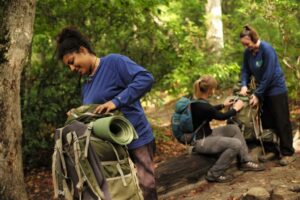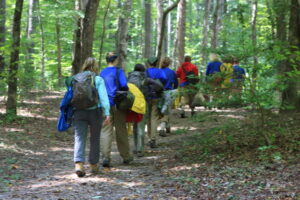The Trails Wilderness Program Death has become a focal point of attention in recent years, drawing scrutiny and legal investigations due to tragic incidents resulting in the loss of program participants’ lives. The program has faced criticism, prompting a need for thorough investigations to address concerns and ensure the safety and well-being of its participants.
The unfortunate incidents have led to a reevaluation of safety measures and protocols within the Trails Wilderness Program. Recognizing the gravity of participant deaths, there is a pressing need for significant changes and improvements to prevent such tragedies in the future. The occurrences raise critical questions about the level of supervision and overall safety within the program, necessitating a comprehensive review and corrective actions.

Understanding the Trails Wilderness Program involves recognizing it as an outdoor therapy initiative specifically designed for young adults and teenagers. Integrating both experiential and tailored clinical therapy, the program aims to provide a holistic therapeutic approach. Experiential therapy entails hands-on activities and outdoor experiences to foster self-reflection and emotional processing. Simultaneously, tailored clinical therapy focuses on individualized treatment plans to address specific therapeutic goals.
The Trails Wilderness Program Death Of Alec Lansing’s
On November 10, 2014, a distressing incident occurred during a campaign led by the staff of Trail Carolina, involving Alec Lansing accidentally getting separated from the group. Despite the staff’s thorough research efforts, they faced challenges in locating Alec Lansing, leading to a situation filled with concern and worry for everyone involved. Recognizing the severity of the situation, someone promptly notified the Jackson County Sheriff’s Office.
In response to the distress call, the assistant initiated a search operation to locate Alec Lansing. The search took place in the expansive Nantahala National Forest, and despite the challenges, the efforts were intensified. Eventually, with the assistance of a search dog, Alec Lansing’s body was discovered.
The unfolding events marked a deeply challenging and emotionally charged moment for all participants and staff members involved in the campaign. The incident prompted reflection on safety measures, emergency protocols, and the overall supervision of participants during wilderness programs like Trail Carolina. Such incidents underscore the importance of constant vigilance and enhanced safety measures to prevent and respond effectively to unforeseen circumstances in outdoor therapy programs.
Post Mortem Examination
The tragic demise of Alec Lansing was attributed to hypothermia, a condition exacerbated by the low temperatures prevalent during the incident. Hypothermia is a severe and potentially life-threatening condition that occurs when the body loses heat more quickly than it can produce, leading to a dangerously low body temperature. In the context of the cold outdoor environment, Alec Lansing’s vulnerability to hypothermia underscores the critical importance of taking precautions to ensure warmth and safety during wilderness activities.
The adverse effects of hypothermia are compounded by the additional complication of a broken hip, further intensifying the complexity of the situation. A broken hip not only poses its own set of challenges but also hampers mobility and exacerbates the difficulties associated with exposure to cold temperatures. The combination of hypothermia and a broken hip paints a distressing picture of the circumstances Alec Lansing faced during the campaign with Trail Carolina.
Death Of Sergey Blashchishen
Another distressing incident unfolded involving a 16-year-old boy named Sergey, hailing from Parkrose, Oregon, within the Trails Wilderness Therapy Program. This tragic occurrence came under investigation, revealing that Sergey’s untimely demise was attributed to a heart stroke that occurred while he was engaged in hiking activities. The circumstances surrounding his death also raised concerns about potential contributing factors, such as fatigue or a lack of adequate nutrition during the hiking expedition.
In the aftermath of Sergey’s tragic passing, his parents took significant legal action against the Trails Wilderness Program, seeking justice for the loss of their son. The legal recourse underscores the gravity of the situation and the parents’ determination to hold the program accountable for the circumstances that led to Sergey’s demise.

This unfortunate incident amplifies the importance of rigorous safety measures, thorough health assessments, and vigilant supervision during wilderness therapy programs. It underscores the need for programs like Trails Wilderness to prioritize participant well-being, address potential health risks, and ensure that adequate provisions for nutrition and rest are in place during outdoor activities. The legal actions taken by Sergey’s parents highlight the broader implications and responsibilities that organizations offering wilderness therapy programs bear in ensuring the safety and welfare of their participants.
Read Also:- Customer Experience for Loyalty Programs
Future Aims In Trails Wilderness Program Death
Implementing a set of crucial precautionary measures is imperative within the Trails Wilderness Therapy Program to mitigate the risk of serious incidents, including fatalities. These measures are integral to ensuring the safety and well-being of participants engaged in outdoor activities.
First and foremost, a comprehensive health assessment should be conducted for each participant before embarking on any wilderness expedition. This assessment should encompass factors such as pre-existing medical conditions, fitness levels, and any potential vulnerabilities that may impact a participant’s ability to cope with the physical demands of the program.
In the context of outdoor activities, particularly in challenging environmental conditions, stringent safety protocols must be established. This includes thorough risk assessments of the terrain, weather conditions, and potential hazards participants might encounter. Additionally, clear and detailed emergency response plans should be in place to address unforeseen circumstances promptly.
Disciplined Certificate And Accreditation
Ensuring the safety of participants in therapy sessions within the Trails Wilderness Program necessitates the presence of certified staff members. The certification of staff members is crucial as it serves as an assurance of their disciplined approach and adherence to stringent safety measures.
Certified staff members undergo specialized training that equips them with the necessary skills and knowledge to conduct therapy sessions in an outdoor wilderness setting. This training encompasses various aspects, including emergency response procedures, risk assessment, participant supervision, and the nuances of conducting therapy sessions in a non-traditional environment.

Discipline among certified staff members is of paramount importance as it contributes to the overall effectiveness and success of therapy sessions. Their commitment to following established safety protocols, coupled with their expertise, creates an environment where participants can engage in therapeutic activities with a sense of security and trust.
Continual Training
Within the realm of wilderness therapy, ongoing training is deemed crucial for both staff members and trainees, particularly in the domains of first aid and emergency handling. This continuous training regimen ensures that personnel are adequately prepared to navigate and address any potential crises that may arise during the Trails Wilderness Therapy Program. By staying engaged in ongoing training initiatives, staff members and trainees not only enhance their proficiency but also remain abreast of the latest techniques and protocols relevant to wilderness therapy, thereby contributing to a safer and more effective therapeutic environment.
Safety Attire
Prioritizing the safety of both staff and participants in the Trails Wilderness Therapy Program necessitates the provision of appropriate safety gear. This includes essentials such as helmets, gloves, sturdy shoes, and suitable clothing designed to withstand the challenges of the outdoor environment. By outfitting participants and staff with the requisite safety attire, the program aims to mitigate the risk of injuries and illnesses, fostering an environment where safety is paramount throughout the wilderness therapy experience.
Medical Assessments
Conducting thorough medical examinations for participants emerges as an essential component of ensuring their well-being within the Trails Wilderness Therapy Program. These examinations enable immediate check-ups in the event of minor medical issues, ensuring that participants can fully engage in the therapy program. Beyond the immediate health benefits, such assessments also contribute to the overall improvement of participants’ mental health, promoting a holistic approach to their well-being.
Reputation of Trails Wilderness Program
The reputation of the Trails Wilderness Therapy Program has become a subject of controversy in recent times, amplified by media coverage and negative portrayals of certain individuals who participated in the program. It is crucial, however, to maintain a balanced perspective. Despite unfortunate incidents, numerous troubled adolescents have successfully overcome their disorders through the program, setting healthy goals for their future. The program has garnered support from mental health professionals who attest to its effectiveness. Evaluating the impact of the Trails Wilderness Therapy Program necessitates considering these diverse perspectives to form a comprehensive understanding of its outcomes and contributions to the mental health and well-being of its participants.
Conclusion
The Trails Wilderness Program has faced significant scrutiny and attention, particularly in the wake of tragic incidents resulting in the deaths of participants Alec Lansing and Sergey. These unfortunate events have prompted legal actions, investigations, and discussions surrounding the safety protocols and overall efficacy of the program.
The incidents involving Alec Lansing and Sergey underscore the importance of implementing rigorous safety measures, thorough participant supervision, and comprehensive risk assessments in wilderness therapy programs. The need for certified and well-trained staff, ongoing training in first aid and emergency handling, and the provision of safety gear is evident to ensure the well-being of participants engaged in outdoor therapeutic activities.


